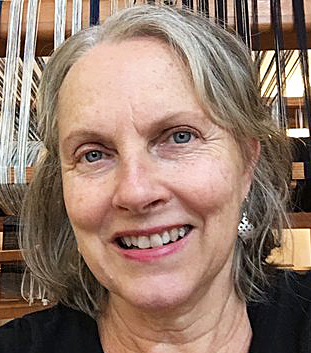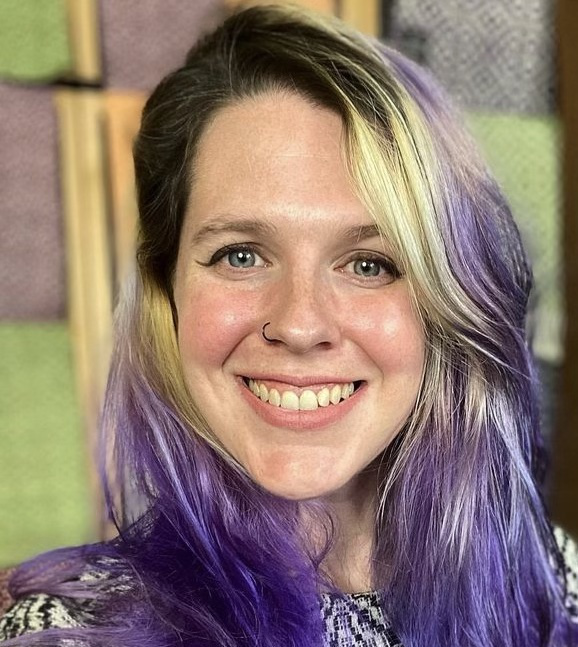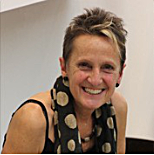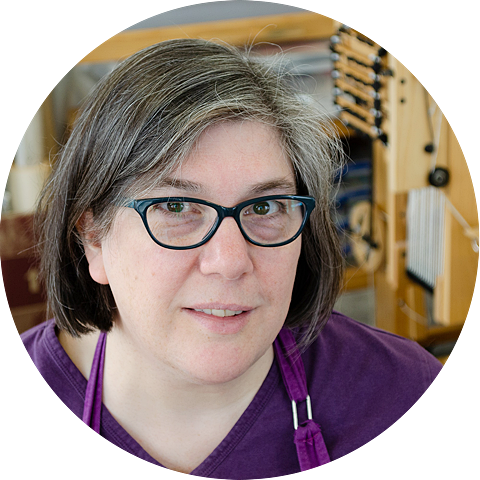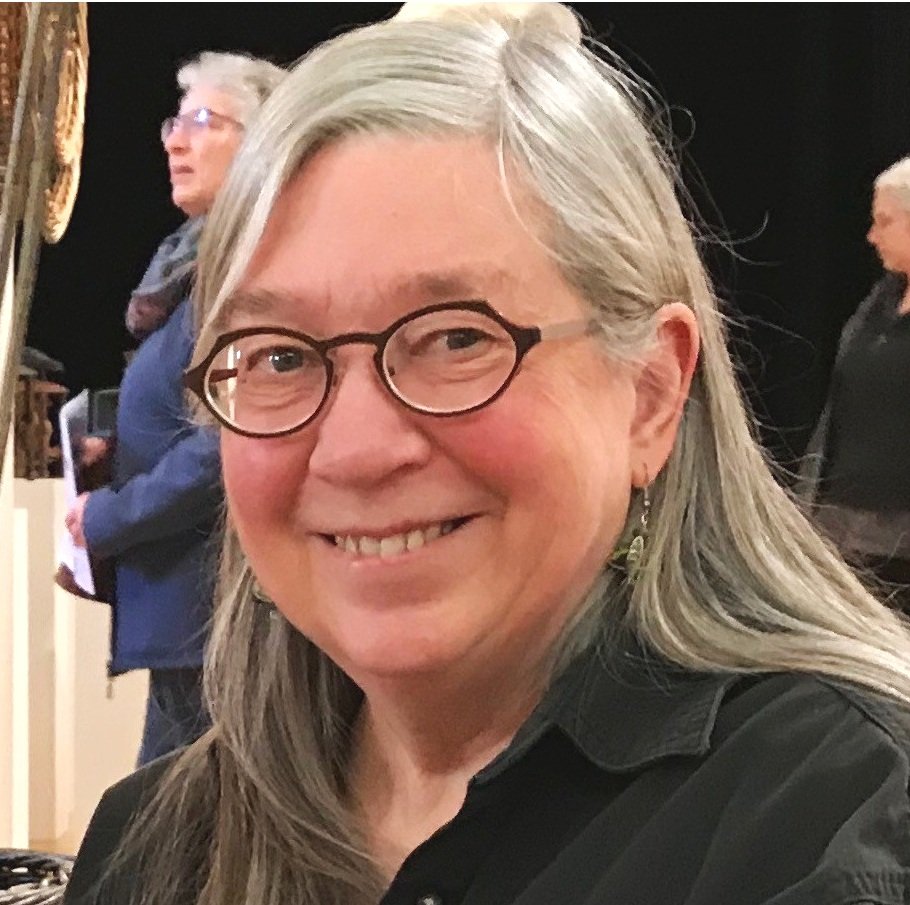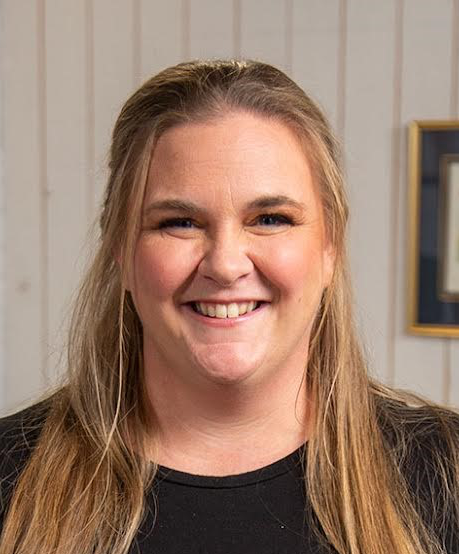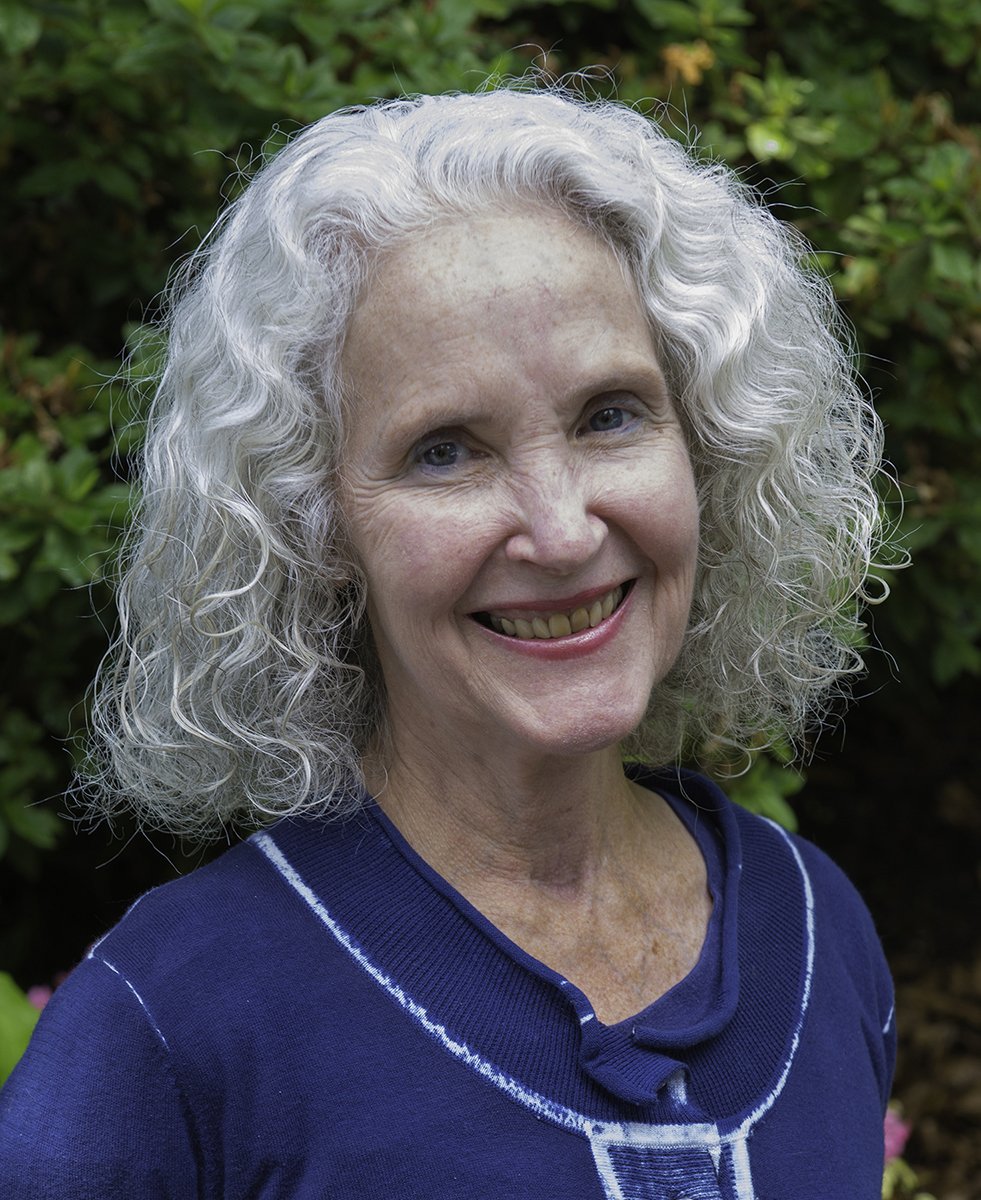Past Workshops
Click below for:
2024-2025 Workshops
2023-2024 Workshops
2022-2023 Workshops
2021-2022 Workshops
May 23-25, 9:00am-4:30pm (3 days)
Registration: Feb 8 (noon) members, Mar 1 non-members
Please email the Workshops Chair with questions.
“Sashiko-Ori” (three day in-person workshop)
Sashiko-ori or Woven Sashiko challenges weavers to think about design in a different way as they learn to control the intersections of pattern threads in the warp and weft. In this 3-day workshop, students will learn to design and weave these patterns and learn ways to stitch patterns into the cloth which they can take home to work on. The workbook will give students some additional avenues to explore after the workshop.
Apr 26 - 27, 9:00am-4:30pm (2 days)
Registration: This workshop is open to the public. https://secure.lglforms.com/form_engine/s/-5pGMTsCCqN8Xp088Ri1yA
Please email the Workshops Chair with questions.
“Leno Structures: Weaving with Doups on 4-8 Shaft Looms ” (two day in-person workshop)
In this 2-day workshop, students will learn about Leno, which by definition, is a variation of the normal plain-weave structure that requires a modification of the standard handloom harness/heddle arrangement to produce. To weave leno structures, a half-heddle called a doup is added to the front harness (or harnesses) of the loom. This doup crosses under a warp end that is not raised during weaving, called the ground end. The crossing end is entered through the last harness of the loom, and through the eye of the doup (on the first harness of the loom). By alternating lifts of the doup harness and the back harness, the two ends of the leno unit are intertwined as the weft is inserted.
This is not a round robin.
Mar 29-30, 9:00am-4:30pm (2 days)
Registration: CLASS IS FULL (12/19/24)
Please email the Workshops Chair with questions.
“Color in Weaving” (two day in-person workshop)
You select the yarns for a project – they look so great together on the cones. Then you put them on the loom and well, things don’t look like you had envisioned. This 2-day class is an introduction to color theory for weavers. We will discuss color theory, working with different color combinations and how color value affects your weaving projects so that you can achieve color success in your projects.
This is not a round robin.
Feb 28 - Mar 2, 9:00am-4:30pm (3 days)
Registration Link: CLASS IS FULL (12/22/24)
Please email the Workshops Chair with questions.
“Weaving with Wire” (three day in-person workshop)
Weaving with wire creates a woven metal fabric that is strong and capable of being used for a wide range of sculptural forms. This three-day workshop will take the participants through all of the steps of creating woven metal fabric and will allow them to fabricate some small sculptures or jewelry during the workshop.
This is not a round robin.
Jan 24-Jan 26, 9:00am-4:30pm (3 days)
This workshop is now open to the public (11/3/24).
Registration Link: https://secure.lglforms.com/form_engine/s/6TAyAHzxeuD4a03ibVlTpw
Please email the Workshops Chair with questions.
“Deep Dive into Profile Drafts” (three day in-person workshop)
If you understand a weaving draft, you can understand how to make a profile draft work for you. This draft intensive study will guide the class through reading and translating a profile draft into multiple structures. The information we gather from these exercises will then be explored on the loom, and worked round robin so that each resulting structure can be experienced by every student. This intermediate level class will help build confidence in reading weaving drafts and encourage curiosity through structure sampling.
2024-2025
2023-2024
TO REGISTER:
Workshop is now full (7/26/24).
Please email Jenny Heard for additional information.
“Tactile Sensibility in Woven Tapestry,” (three day in-person workshop)
The overriding gain of this course is to hone the eye, hand, and intellect in the intricate interplay of structure, material, and design in woven tapestry. The tutor’s own quiet, minimal, and abstract works are strongly informed by the material of their construction. Whether working in linen, hemp, raffia, or paper, she talks of the ‘integrity of mark-making intrinsic to a particular thread or structure’ and her focus is to ‘make work that speaks its own vocabulary.’ These ideas will form the focus for this workshop. Participants will generate several carefully considered samples, each examining a distinct facet in the creation of woven tapestry cloth
2nd Session: May 28, June 1 & 4 - CLOSED/FULL
Please email the Workshops Chair with questions.
An Exploration of Double Huck” (three day Zoom workshop)
During the 3-session virtual workshop, students will weave a variety of samples in double huck, including layer and block exchange, stitched layers, mixed structures and color-and-weave effects. The program includes three talks to introduce different aspects of the material, as well as supporting video demonstrations which participants can access at any time. In the final session, we consider extending the structure to more than 8 shafts. This is not a round robin. Participants will need to have access to an 8-shaft loom and will receive full instructions enabling them to set up their looms ahead of time. Note that countermarche looms are not suitable for this workshop..
TO REGISTER: 2 sessions
Session #1: March 30-31, 2024 - Session is FULL
Session #2: May 4-5, 2024 - Session is FULL
Please email the Workshops Chair with questions.
“Oval Willow Basket Workshop” (two day in-person workshop)
This two-day workshop will cover construction of a slender oval willow basket, which is great for shopping, going on picnics, carrying paperwork or maybe your current needlework project. The basket begins with a base woven on a frame, and stakes attached using a method called scalloming. The base is fun to weave, and learning to cut scalloms and attach stakes in this way will let you see how to design baskets of all shapes and sizes. Students must be comfortable using a knife for this class and hand strength is necessary when weaving with willow. The basket will be woven from willow grown on the instructors Skagit Valley farm. Colors of willow will vary. Leather will be provided for two shorter handles or one longer shoulder strap.
TO REGISTER: 2 sessions
Session #1: April 26-28, 2024 - Session is FULL
Session #2: April 29 - May 1, 2024 - Session is FULL
Please email the Workshops Chair with questions.
“The Shifted Ikat Scarf” (three day in-person workshop)
Ikat is the centuries-old art and technique of resist-dying pattern into individual threads before weaving. It is a complex and revered fiber process resulting in graphically elaborate and compellingly beautiful woven cloth. Ikat wrapped yarns, when dipped in vats of dye, ihttps://www.seattleweaversguild.com/workshop-registrationnstantly become timeless, immersed in an ancient partnership between intention, design, and color.
Participants in this three-day workshop will design, wrap, dye, and weave a blue/white ikat scarf while learning the basic techniques of the warp ikat process. Each student will stretch a warp for an ikat scarf using warp yarns and a warping board they have brought to class. Several ikat warp wrapping methods will be demonstrated. The first day’s session will culminate in students dyeing their ikat wrapped warps using Procion Mx fiber reactive synthetic dye and then unwrapping the ikat resist warp bundles. Yarns will be hung to dry overnight.
TO REGISTER: Workshop is Full
Please email the Workshops Chair with questions.
“Willow Bark Windmill Weave Basket” (one day in-person workshop)
During this one-day workshop, students will use prepared ¼” strips of willow bark to play with windmill weave to form this unique basket. Several examples of shape and design will be shown, and students will then decide to either work to an exact plan or make it up as they go along. After creating some samples of the weave to save as reminders, students will weave a simple over under base, and then commence the windmill weave sides. Once you’ve mastered the “stitch” the weaving is enjoyable and repetitive.
TO REGISTER: 2 sessions
Session #1: Feb 22-23, 2024 - Session is FULL
Session #2: April 13-14, 2024 - OPEN / NOT FULL
registration for Session #2 opens Feb 3, 2024 @ noon, go to:
https://www.seattleweaversguild.com/workshop-registration
Please email the Workshops Chair with questions.
“Garment Construction and Finishing Techniques for Handweavers and Other Fiber Artists” (two day Zoom workshop)
A crash course in garment construction, embellishment, piecing, fit, finishing, and all-around fun! For weavers or anyone interested in learning to construct great looking and great fitting garments. Learn to be creative with your seam finishes, buttonholes, closures, linings, and embellishment. This is a terrific class for those wanting to learn to sew clothing from their hand-woven or other special fabric, as well as for those more experienced wanting polished and professional results. This class is both PowerPoint lecture and hands on!
TO REGISTER: Workshop is full (10/15/23).
Please email the Workshops Chair with questions or to be placed on a wait list.
“Zig Zag Rag Rug Techniques” (two day in-person workshop)
Students will weave a table runner or placemats during this 2-day workshop. The techniques they learn through these smaller projects can be applied to larger rugs on bigger looms. They will learn the techniques and tricks unique to zig zag rag rugs, including additional information on selvedge edges and finishing techniques that are unlike other rug finishes they may have been exposed to.
2022-2023
Sold out! Please contact the Workshops Chair to be put on a waitlist.
Using fewer than four threads per tablet, a technique dating back to the Hallstatt culture (c. 1500BCE), allows the weaver more flexibility in design, produces a less bulky band, and requires that the weaver have a good working knowledge of how tablet weaving works. In this workshop we will survey the range of vacant-hole techniques historically available to the weaver, examine the variables which control tablet weaving, and weave both a three-thread and a two-thread sample band. We will also discuss and practice both warping and drafting for the two techniques. Students will receive an extensive handout, including information on many of the techniques surveyed.
TO REGISTER: FULL (updated 4/15/23):
Please email the Workshops Chair with questions.
Deflected Double Weave (DDW) is a weave structure that has been “around” for a long time—at least as far back as the Ancient Colonial Shawl draft published in Mary Meigs Atwater’s Recipe Book, 1957. It has been called many things by many weavers and whether it is truly “double weave” is still debated. Traditionally, double weave is a single cloth in which there are two weaves. One warp interlaces with one weft and another warp interlaces with a second weft.
Sold out! Please contact the Workshops Chair to be put on a waitlist.
[VIRTUAL WORKSHOP] The structure of Huck Lace provides a treasure trove of pattern for weavers. It is a shaft-efficient weave structure where an 8-shaft loom produces 6-block patterns; and a 4-shaft loom produces sixteen different ways to combine textures of warp & weft floats with plain weave.
Shadow Weave is a subset of color-and-weave; and it is related to many techniques, other structures, and contrivances in weaving. This sometimes makes it feel unattainable. If we take it one characteristic or method at a time we are able to traverse the many pathways it offers. This workshop will be a round robin style exploration of the method developed by Marian Powell for weaving Shadow Weave. You will be weaving brand new drafts developed by your instructor. Each loom will have a different draft. Participants will be given all the drafts in a multiple page binder filled with colorful handouts.
Sold out! Please contact the Workshops Chair to be put on a waitlist.
[VIRTUAL WORKSHOP] This zoom workshop will focus on Decorative Stitched Double Cloth, an unusual structure that does not get much attention. To learn and understand the structure, students will weave a sample blanket (gamp). They can either weave the sample from Janet’s book or design their own.
2021-2022
Learn these wonderful, advanced techniques that can take your weaving to the next level. Spend some time making a sampler that includes simple hemstitch, twining, looping, soumak and inlay, which can add textural interest to your weaving projects. During the class you will learn the techniques and then be encouraged to try different yarns and variations to broaden your understanding of these skills. Use these variations to create your own style and increase the artistry of your woven pieces.
Learn these wonderful, advanced techniques that can take your weaving to the next level. Spend some time making a sampler that includes simple hemstitch, twining, looping, soumak and inlay, which can add textural interest to your weaving projects. During the class you will learn the techniques and then be encouraged to try different yarns and variations to broaden your understanding of these skills. Use these variations to create your own style and increase the artistry of your woven pieces.
This two-day workshop for intermediate to advanced weavers explores both classic and nontraditional methods of rep weaving. Every loom will be set up with a different draft, variety of warp materials, sett and technique. Students will pre-thread their loom to a design provided by the instructor. Some samples will be inspired by weave structures such as controlled floats, Shadow, Krokbragd, Honeycomb. Each draft will be a study in details through drafting and color interactions. Time will be set aside to learn pick up design in rep weave. This class is not a round robin, although students may have the option to weave on other students' looms on the second day.
For weavers who have already been doing Baltic-style pickup work, you will be amazed at how easy it is to add more color and complexity to your pattern motifs and create fantastic new ones. Unknown to most modern weavers, three-color pickup is an older technique for which pattern books have not been readily available until now. To weave this variation, it's essential that you have a working knowledge of regular Baltic pickup. First we will look at samples and discuss what makes this different from the typical Baltic patterns. By viewing the samples, students will get an understanding of the difference between asymmetrical and symmetrical threadings as well as tips for choosing colors to make the patterns pop. We will also look at charts and learn how to follow them and to create your own. Students will then warp their looms and practice weaving various motifs using pattern charts supplied by the instructor.
Baltic-style pickup is a simple technique to learn but has vast possibilities for creating exciting patterns on a woven band. During class, students will look at examples to learn the many variations which are possible using the Baltic-style pickup technique, explore simple pickup patterns as well as pick and drop patterns, learn to read and create charts for the designs. Using the designs, students will set up their looms and weave a sampler of patterns.
During class, students will look at hundreds of examples and discuss what makes a good design, discuss color theory, look at yarn choices, experiment with color selection tools, make an off-loom preview, chart patterns on paper or with an online tool. Students will then use the patterns that they create to set up the looms. Class will cover tips and tricks for ease of warping, how to produce even bands with straight selvedges, how to finish a band and a bit of problem-solving.
In this three-day workshop students will learn about the ''ripple'' technique, which is a way of creating more three-dimensional texture in the surface of a tapestry. During class, students will work out some of the issues this technique creates and explore effective ways to make use of it.
This three-day workshop for intermediate and advanced weavers combines name drafting and block weaves to produce unique, sophisticated commemorative weaving. Students will design their own projects derived from block name drafts provided by the teacher. Exercises include development of name block profiles, analysis of the overshot structure, block name drafting, and color block encryption. This is not a round-robin workshop.

